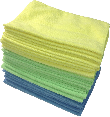It pretty much goes without saying that one of the easiest ways to improve the air quality in your home is by cleaning the air. The question, though, is what is the easiest way to do that? Many believe that the answer involves the use of air purification systems. However, there are a few things that people need to know when considering an air purification system for their home.
Anyone that has gone to their local home improvement store can attest to the fact there are multiple models available. However, there is a little difficulty in knowing which ones will meet your needs. Follow these simple guidelines and you'll have a firm grasp of the basics which will provide you a firmer foundation when making your decision.
- Purpose. When looking at an air purification system, you need to have in mind a specific purpose. What will you be expecting of this system? Do you want it to clean the air in your whole house or just a particular room? Will you be using this at home or the office? Will it be used in a high traffic area or an area that is more sedate?
- Models. Generally speaking, there are four types of air purification systems that are used in the home. Each type of system is based on the filter used: media, electronic, humidification, and ultraviolet. While all of these models serve the same basic purpose, these each will go about it in slightly different ways.
- Price range. While it is true that you get what you pay for, this is one area where the most expensive units may not be best for your needs. If you are susceptible to asthma attacks, then you may simply wish to use a humidifier for the room you are in, which will run you about $40.00. However, for a more thorough cleaning of the air in your entire home, then you may wish to start saving money, since a whole-house or central-air filter will start in the $1,500.00 range and it only goes up from there.
- How they work. Media filters, which are some of the most common types of air purification systems around, work by forcing air through a filter made of a fibrous material that will help scrub the impurities from the air. Electronic filters, also known as ionic filters, are a little more complicated in that they use the ionic charge of particles to attract dirt and grime in the air onto plates, allowing the clean air to continue on. Humidifier filtration is pretty self explanatory, allergens and air pollutants stick to the water, and water in the form of a mist falls to the ground. Ultraviolet filters use ultraviolet rays to eliminate germs and other allergens that pass through its system.
Author Bio
Lee Wyatt
Contributor of numerous Tips.Net articles, Lee Wyatt is quickly becoming a regular "Jack of all trades." He is currently an independent contractor specializing in writing and editing. Contact him today for all of your writing and editing needs! Click here to contact. Learn more about Lee...
Stopping Battery Terminal Corrosion
Battery terminal corrosion is one of the many ways that your car's battery might stop working. Luckily, stopping battery ...
Discover More
Caraway
Caraway has been around for a very long time and long held a place of honor among the herbs and spices of the world. Take ...
Discover More
Maintaining Your Lifestyle on a Retirement Income
Considering that the average life expectancy has been rising over the past several years, planning for retirement is ...
Discover More
Air Deodorizer
Does the air in your home smell fresh and clean? If not, you may want to try deodorizing it to cover up or remove bad scents.
Discover More
Air Scrubber
Sometimes, a normal air purifier isn't enough to handle a certain job. For bigger air-cleaning situations, an air ...
Discover More
Electrostatic Cleaner
Sometimes, the air around us is not as pure as we'd like. An electrostatic cleaner is one way to filter the air and help ...
Discover More

Comments